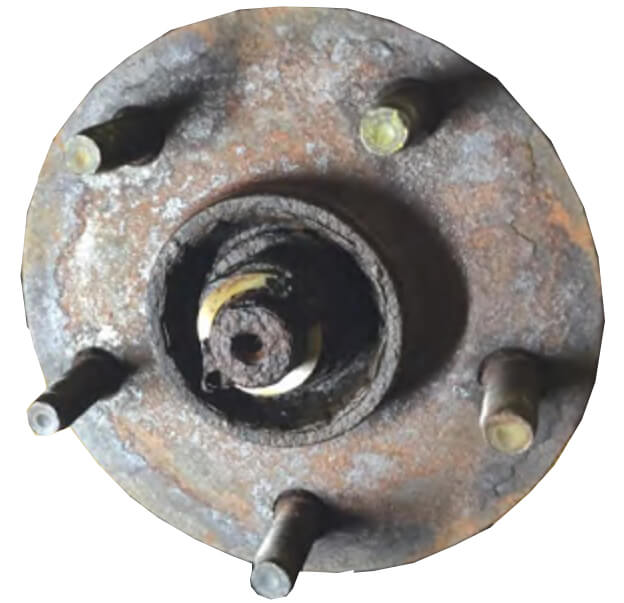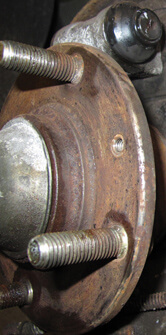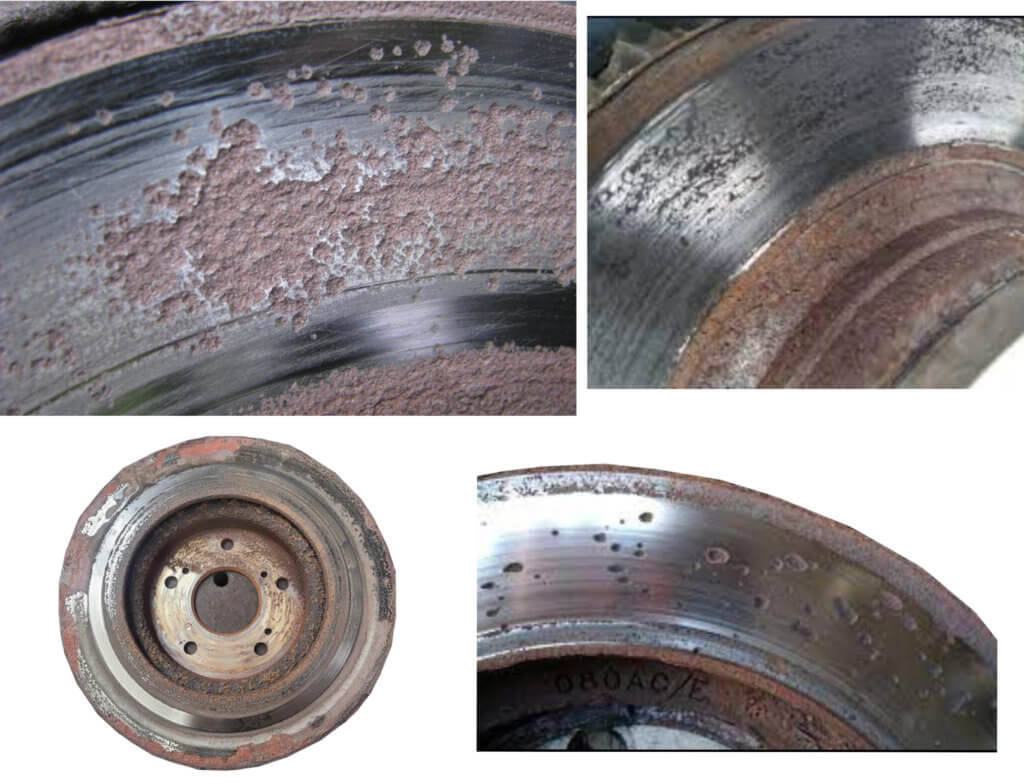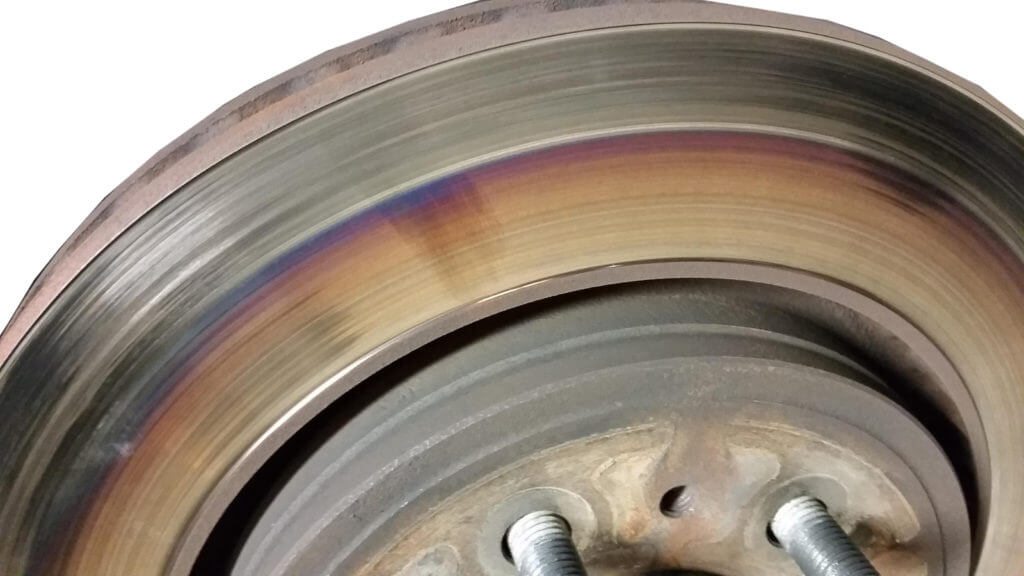Brake pulsation: What causes it and how to prevent it
Learn what causes brake pulsation and judder and how to prevent it
Brake pulsation (also called brake judder) is the #1 cause of brake complaints. The pulsation and judder are almost always caused by sloppy brake installation practices and improper tire rotation. Many people refer to the problem as warped rotors, but rotors don’t warp (more on that later). The cause of brake pulsation is disc thickness variation (DTV). DTV is caused by lateral runout.
FACT versus Fiction: Brake rotors don’t warp. That’s a myth. It never happens. Yet even professional technicians refer to DTV as rotor warp. To understand why rotor warp is impossible, see this post
Lateral runout is caused by the rotor not sitting perfectly parallel with the wheel hub
If the brake rotor doesn’t sit perfectly parallel with the wheel hub, it will rotate in a wobble pattern. All it takes is as little as .002″ of lack of parallelism to cause lateral runout. That will cause one side of the rotor to hit the inboard brake pad on every revolution and the opposite side of the rotor to hit the outboard pad.
Depending on the type of brake pad material, the rotor-to-pad contact will either cause a buildup of friction material on the opposite sides of the rotor or a worn spot on opposite sides. So, it’s really the buildup of friction material on the inboard or outboard side of the rotor or wear on the inboard or outboard side that causes the pulsation. This is called Disc Thickness Variation (DTV).
DTV is felt in the brake pedal, with it rising and falling slightly with each rotation of the rotor. This type of brake pulsation is different than the judder described below that’s felt in the steering wheel or the driver’s seat.
1) Rust on the wheel hub is the #1 cause of lateral runout that causes DTV and brake pulsation
The image on the right shows a wheel hub covered in rust. If you slap a new rotor on that wheel hub, you will get lateral runout, disc thickness variation, and brake pulsation. Cleaning the rust off the hub is critical to performing a proper brake job.

Rust/corrosion on the wheel hub prevents the rotor from sitting perfectly parallel to the hub.
2) Not using a torque wrench when tightening lug nuts is the #2 cause of lateral runout, DTV, and brake pulsation
There is no way you can achieve even lug nut torque without a torque wrench or torque stick (when using an impact wrench). Uneven lug nut torque causes lateral runout because the rotor isn’t evenly torqued to the wheel hub.
3) Worn wheel bearings are the 3rd most common cause of lateral runout and DTV
The caliper and caliper bracket are attached to the steering knuckle. However, the rotor is attached to the wheel hub, which is held in place by the wheel bearing. If the wheel bearing is worn, the rotor won’t run perfectly parallel with the caliper and will cause lateral runout and disc thickness variation

If the wheel bearing is worn the wheel hub and rotor will rotate in a wobble causing brake pulsation
Judder: Pulsation or vibration felt in the steering wheel or the driver’s seat vibration is caused by brake torque variation (BTV)
Brake torque variation (BTV) is often referred to as brake judder. It occurs when there is a variation of torque across the face of the rotor that causes the rotor to slip and catch as brake pads pinch the rotor. BTV may be caused by an inconsistent rotor finish, metallurgy flaws or poor metal quality, patches of corrosion on the rotor face, or uneven deposits of friction material on the face of the rotor (the transfer layer). The varying rotor surface condition causes the brake pads to grip and then slip.

Patches of rust on a brake rotor cause a slip/stick condition that’s referred to as brake torque variation.
Other poor brake job practices that cause lateral run-out and disc thickness variation?
• Reusing old rotors without first inspecting them for lateral run-out
• Improper brake pad bedding procedure, resulting in an uneven transfer layer*
DTV is a topic unto itself and since it causes the vast majority of brake noise problems you should learn more about what causes DTV and how to fix it. See this post on DTV.
Other things to check when you have a vibration when braking, brake pedal pulsation, or vibration in the steering wheel or driver’s seat
• The rotor has blue discoloration from overheating
Check the rotor face for hot spots. Hot spots change the friction characteristics of the rotor, causing the brake pad to slip/stick as it passes over the hot spots. Hot spots cannot be machined out. The rotor must be replaced.

An overheated brake rotor will cause variation in braking grip, which causes vibration.

Corrosion on the hub prevents parallel rotor mating and that causes lateral runout and disc thickness variation
* transfer layer. For more information on transfer layer, see this post
©, 2019 Rick Muscoplat
Posted on by Rick Muscoplat